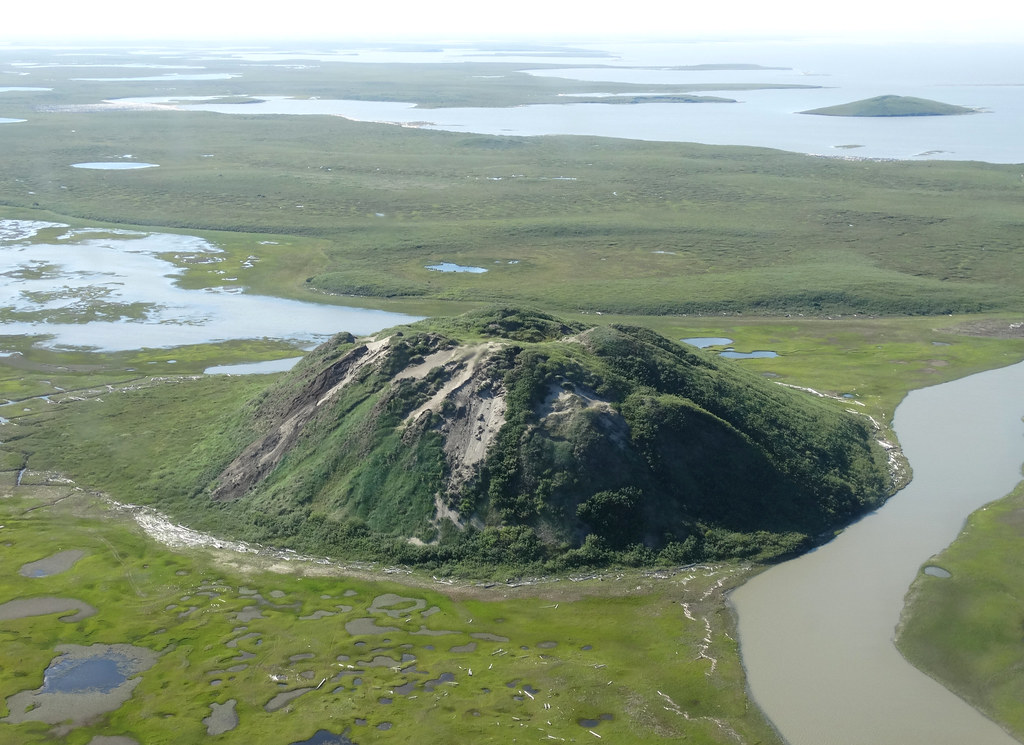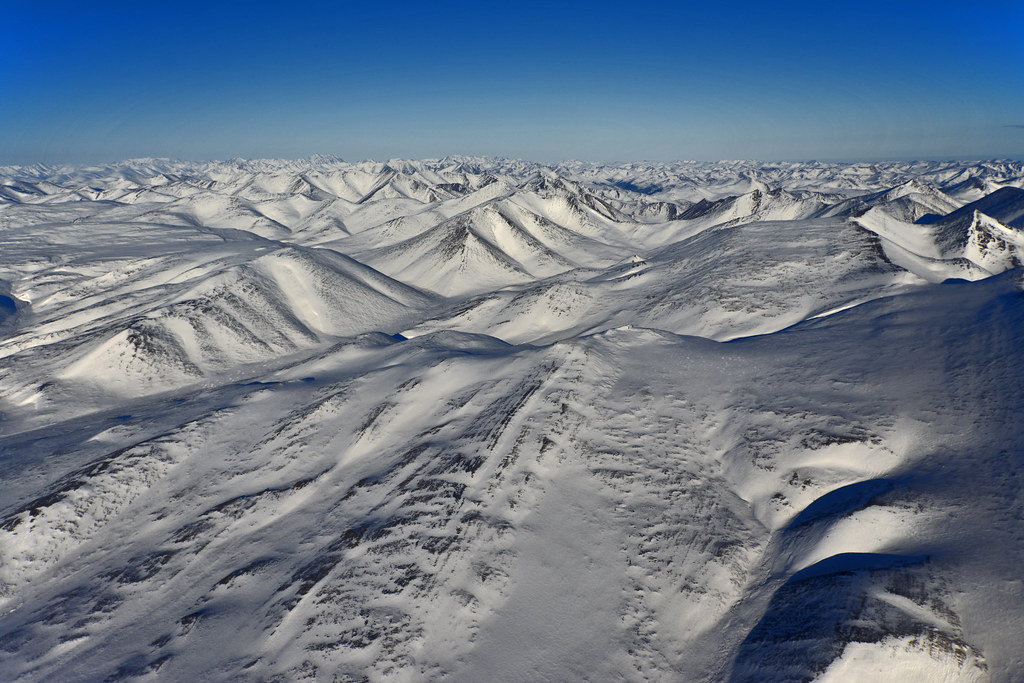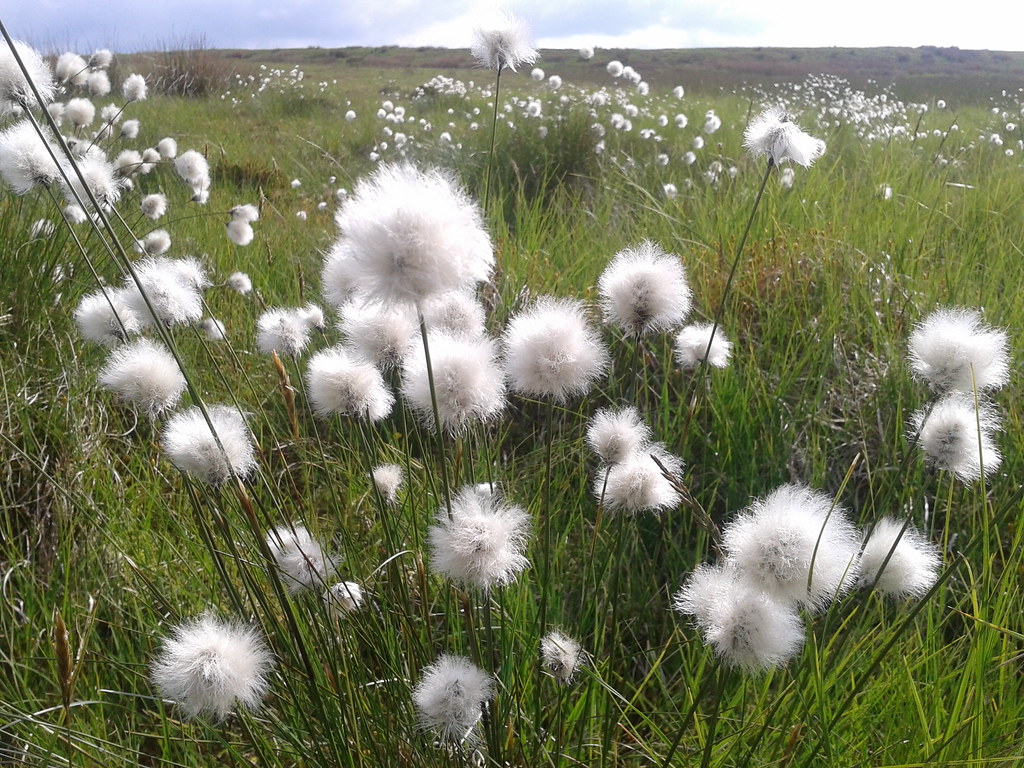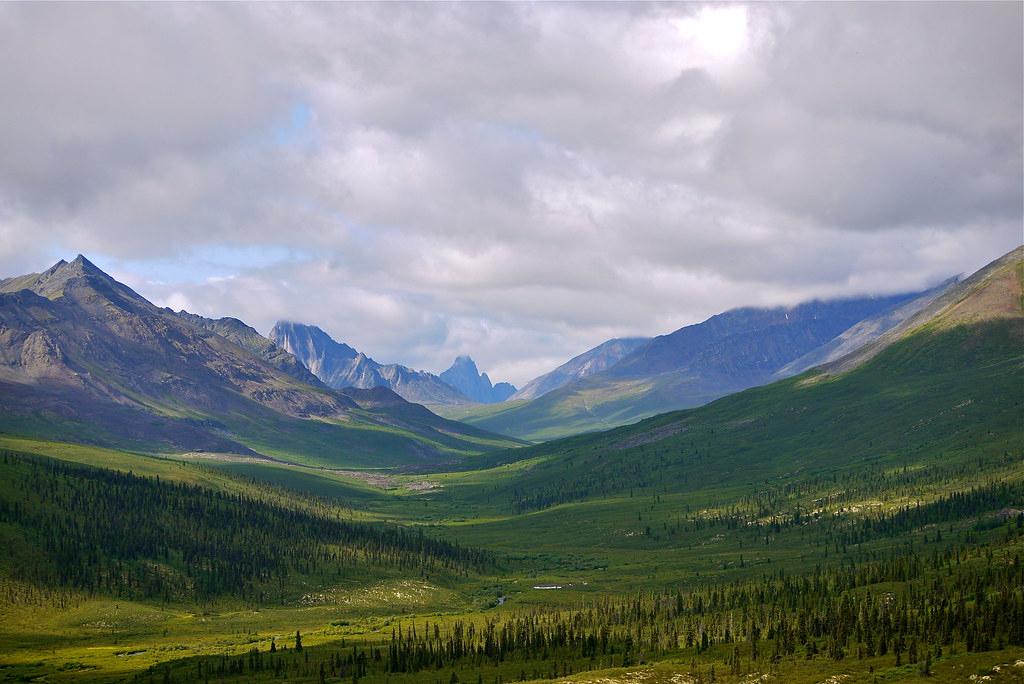You will have to dress warmly to visit the tundra. It is one of the coldest ecosystems on earth. During the winter the average temperature is -34 degrees Celsius although it can get much colder. The best time to visit may be in the summer when it averages 3-12 degrees Celsius, but keep in mind that the temperature only stays above freezing for about 50-60 days.
When the snow melts in the spring, the water cannot sink down deep into the earth because only a few inches of the surface thaws. This creates ponds and marshes that provide food and shelter for millions of insects, birds and other creatures.
The ground is covered with bumps and cracks because of the constant freezing and thawing. These are called polygons.
In some places, water collects in pools underground, and when this freezes it pushes the earth up over and over again until low round hills are formed with ice centres. These are called pingos.
The ground below the active layer (the top metre or less) is always frozen. It is called permafrost. For this reason, tall plants are not as likely to grow here because they cannot root deep enough. Instead plants tend to grow outwards. The season is also very short, which means that plants must grow, flower, and spread their seeds in just a few weeks.
This is cotton grass. Although it may seem unlikely in such an environment, over 1700 species of plants live on the tundra. They must be suited to little precipitation, strong winds and extreme temperatures.

Photo by Fiona Hunt (flickr)
There are many animals that live in the tundra. Here is a snow bunting, a brave little arctic bird, and a lemming. Lemmings stay awake all through the long, cold winter, tunneling under the snow to find food: mosses, lichens, bark and some grasses.
Although it may seem bleak and barren, the tundra is very much a living ecosystem. However, since growth is slow in this part of the world, it also recovers much more slowly from damage such as oil spills or vehicles traffic. The climate seems to be warming as well, which is melting permafrost and changing the landscape as hillsides slide away and land collapses as the ice holding it up disappears. The melting permafrost is thought to be releasing large amounts of methane gas which contributes to climate change.
Activity: What are some actions that you could take to stop contributing to climate change?










